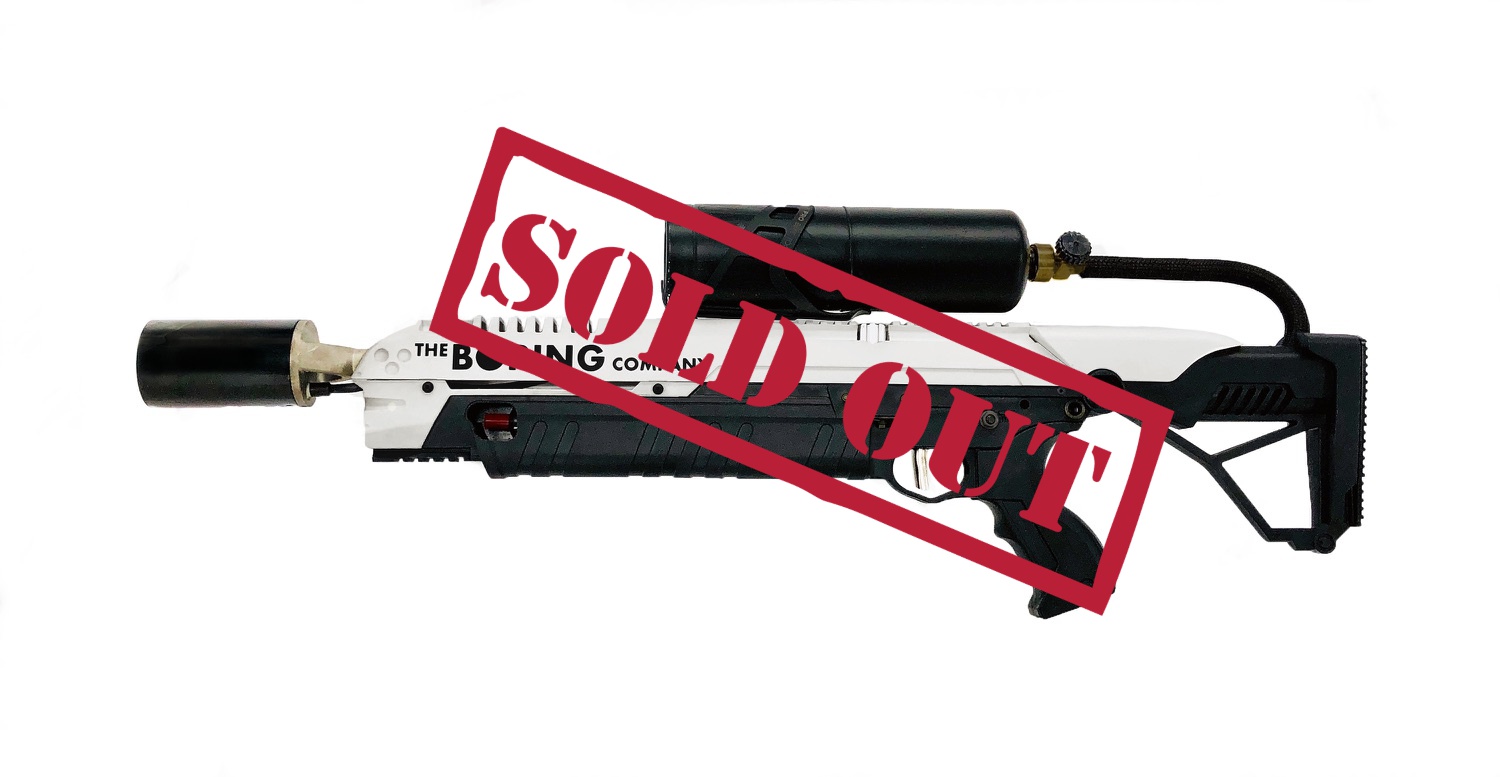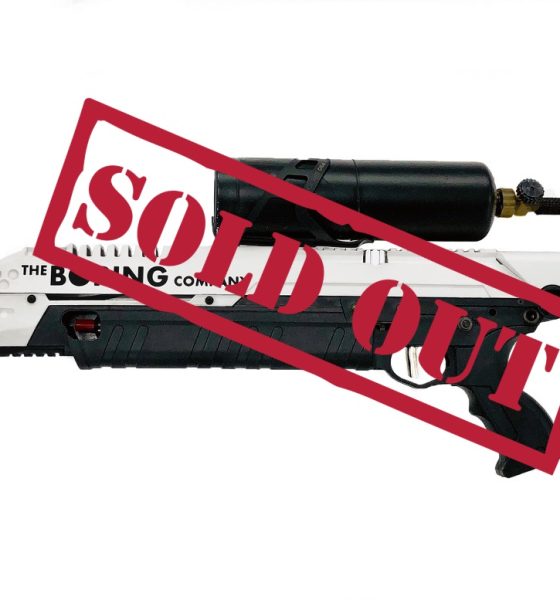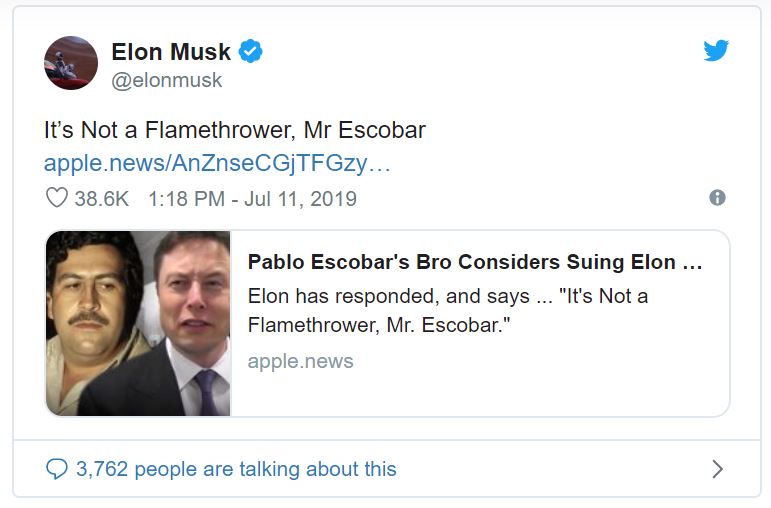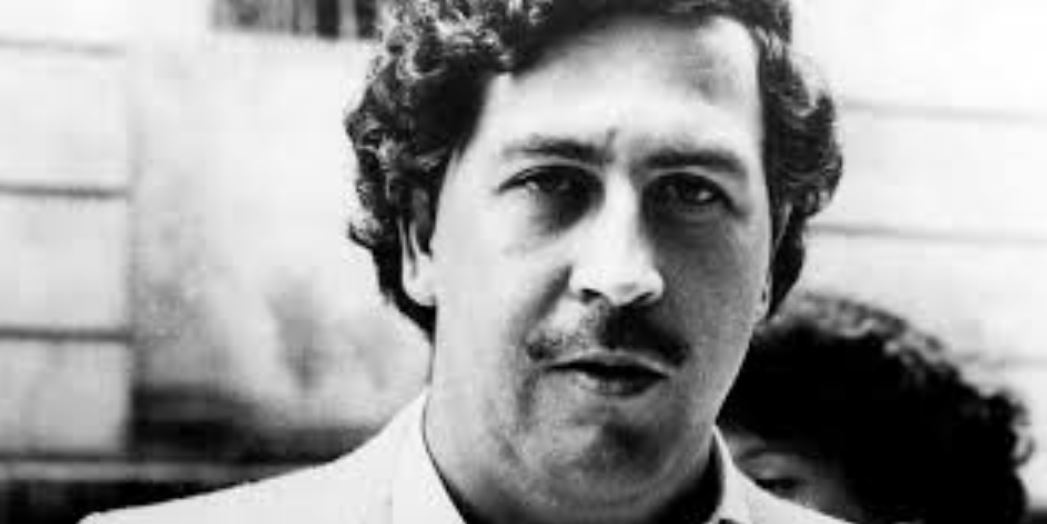

News
Pablo Escobar’s brother wants $100 million in Tesla shares for Not-a-Flamethrower dispute
Elon Musk is no stranger to taking on powerful forces that stand in the way of his Earth-changing missions, but drug lord families still seem like an odd addition to the list. Despite the improbability, infamous cartel founder and cocaine kingpin Pablo Escobar has recently been linked to the serial entrepreneur over The Boring Company’s Not-a-Flamethrower, specifically through Escobar’s brother. Roberto Escobar claims Musk stole the Flamethrower design from him and plans to sue over it – unless Musk agrees to hand over $100 million dollars in either cash or Tesla shares, that is.
“Elon we both know you stole from me, I am OK to settle this right now for $100 million. Tesla shares is OK or cash. I will win in court, and you will lose more than $100 million,” Escobar said in a statement to The Next Web. “Maybe I will make myself new Tesla CEO with the courts?… Let’s settle this like gentleman. Send me the Tesla Shares to Escobar Inc.”
Someone associated with Musk’s business activities reportedly spent time with Escobar (the living brother, not the deceased drug lord) in the summer of 2017 wherein an Escobar Inc. toy flamethrower concept was discussed, according to a report originally published by TMZ. The Boring Company’s Flamethrower, announced in January 2018, apparently was a dead ringer for Escobar’s idea design-wise, leading cartel leader’s brother to angrily conclude that his idea had been stolen. Musk later responded to TMZ‘s report on Twitter, saying “It’s Not a Flamethrower, Mr Escobar.”

The dispute is interesting and unusual, to say the least, but we can be sure there’s one thing Boring clearly did not get from Escobar Inc. – the flamethrower’s purpose.
“I want the people to be able to burn money, like me and Pablo used to do. I burned probably a couple of billion dollars over the years. Literally burning the money. For many reasons,” Escobar was quoted as saying about the device.

Escobar is now weighing his legal options against Musk, although it’s not clear what options are exactly available.
Prior to 2013, if an inventor could demonstrate their invention predated someone else’s patented invention for the same thing, they could sue and work out a financially retroactive deal to be compensated for their work (more or less). However, with the enactment of the America Invents Act, the United States now has a “first to file” system that only gives inventors one year from public disclosure of their invention to file for patent protection. In Escobar’s case, he’s basically too late to file for a patent where it would matter most to Musk – in the United States. The only other legal workaround would seem to be a lawsuit over a non-disclosure agreement, which doesn’t appear to have happened here. It’s not enough that there were witnesses to the discussion, and it also doesn’t seem like there was even a handshake-type understanding over any claims to the design.
Another thing worth mentioning is that if The Boring Company has already filed for patent protection of its Not-a-Flamethrower design, it doesn’t appear to have published yet based on patent database searches. Since the idea was disclosed in January 2018 (or even 2017, based on Escobar’s claims), it’s now considered ‘prior art’ and renders any other highly similar patent filings ineligible for protection. It would appear that Escobar’s best bet for legal protection would have been to file for a patent right after Musk’s flamethrower was announced so both devices would have been in that muddy one-year window and open to a court fight. Alas, it’s all water under the bridge now.
The Boring Company had a few options to pursue here, actually. First, the tunneling venture could have filed for a design patent which only protects what their flamethrower looks like. These types of patent applications usually issue to full patents quickly unless the patent examiner objects to it based on similar designs. If Boring went this route, we should see a patent show up shortly if one was filed around the time of the product announcement in January 2018.

A second option The Boring Company could have taken was to file for a utility patent, meaning there was some sort of technical merit to the Not-a-Flamethrower’s design. These publish 18 months after filing unless non-publication is specifically requested. If Boring went this route, well, there are so many timelines that could have been taken, it’s hard to say whether we’ll see anything until a patent issues, assuming one issues at all. Regardless, the patent route was Escobar’s only real route for lawsuit-driven compensation, and he seems out of luck.
Perhaps in response to recent publicity, the Escobar Inc. Flamethrower just went on sale for $250, and according to its company website’s History page, 20,000 units will be produced. This, of course, is the exact amount the Boring Company sold at the original price of $500. Among other interesting news items, one of the gems from that same History page reads, “2004 – Roberto de Jesus Escobar Gaviria is freed from Itagui Prison based on excellent behavior.” This important moment in the Escobar Inc. chronicles is surely only matched by the successful launch of Escobar Inc.’s Flamethrower for burning cold hard cash in cocaine kingpin fashion.

News
Tesla (TSLA) receives “Buy” rating and $551 PT from Canaccord Genuity
He also maintained a “Buy” rating for TSLA stock over the company’s improving long-term outlook, which is driven by autonomy and robotics.

Canaccord Genuity analyst George Gianarikas raised his Tesla (NASDAQ:TSLA) price target from $482 to $551. He also maintained a “Buy” rating for TSLA stock over the company’s improving long-term outlook, which is driven by autonomy and robotics.
The analyst’s updated note
Gianarikas lowered his 4Q25 delivery estimates but pointed to several positive factors in the Tesla story. He noted that EV adoption in emerging markets is gaining pace, and progress in FSD and the Robotaxi rollout in 2026 represent major upside drivers. Further progress in the Optimus program next year could also add more momentum for the electric vehicle maker.
“Overall, yes, 4Q25 delivery expectations are being revised lower. However, the reset in the US EV market is laying the groundwork for a more durable and attractive long-term demand environment.
“At the same time, EV penetration in emerging markets is accelerating, reinforcing Tesla’s potential multi‑year growth runway beyond the US. Global progress in FSD and the anticipated rollout of a larger robotaxi fleet in 2026 are increasingly important components of the Tesla equity story and could provide sentiment tailwinds,” the analyst wrote.
Tesla’s busy 2026
The upcoming year would be a busy one for Tesla, considering the company’s plans and targets. The autonomous two-seat Cybercab has been confirmed to start production sometime in Q2 2026, as per Elon Musk during the 2025 Annual Shareholder Meeting.
Apart from this, Tesla is also expected to unveil the next-generation Roadster on April 1, 2026. Tesla is also expected to start high-volume production of the Tesla Semi in Nevada next year.
Apart from vehicle launches, Tesla has expressed its intentions to significantly ramp the rollout of FSD to several regions worldwide, such as Europe. Plans are also underway to launch more Robotaxi networks in several more key areas across the United States.
News
Waymo sues Santa Monica over order to halt overnight charging sessions
In its complaint, Waymo argued that its self-driving cars’ operations do not constitute a public nuisance, and compliance with the city’s order would cause the company irreparable harm.

Waymo has filed a lawsuit against the City of Santa Monica in Los Angeles County Superior Court, seeking to block an order that requires the company to cease overnight charging at two facilities.
In its complaint, Waymo argued that its self-driving cars’ operations do not constitute a public nuisance, and compliance with the city’s order would cause the company irreparable harm.
Nuisance claims
As noted in a report from the Los Angeles Times, Waymo’s two charging sites at Euclid Street and Broadway have operated for about a year, supporting the company’s growing fleet with round-the-clock activity. Unfortunately, this has also resulted in residents in the area reportedly being unable to sleep due to incessant beeping from self-driving taxis that are moving in and out of the charging stations around the clock.
Frustrated residents have protested against the Waymos by blocking the vehicles’ paths, placing cones, and “stacking” cars to create backups. This has also resulted in multiple calls to the police.
Last month, the city issued an order to Waymo and its charging partner, Voltera, to cease overnight operations at the charging locations, stating that the self-driving vehicles’ activities at night were a public nuisance. A December 15 meeting yielded no agreement on mitigations like software rerouting. Waymo proposed changes, but the city reportedly insisted that nothing would satisfy the irate residents.
“We are disappointed that the City has chosen an adversarial path over a collaborative one. The City’s position has been to insist that no actions taken or proposed by Waymo would satisfy the complaining neighbors and therefore must be deemed insufficient,” a Waymo spokesperson stated.
Waymo pushes back
In its legal complaint, Waymo stated that its “activities at the Broadway Facilities do not constitute a public nuisance.” The company also noted that it “faces imminent and irreparable harm to its operations, employees, and customers” from the city’s order. The suit also stated that the city was fully aware that the Voltera charging sites would be operating around the clock to support Waymo’s self-driving taxis.
The company highlighted over one million trips in Santa Monica since launch, with more than 50,000 rides starting or ending there in November alone. Waymo also criticized the city for adopting a contentious strategy against businesses.
“The City of Santa Monica’s recent actions are inconsistent with its stated goal of attracting investment. At a time when the City faces a serious fiscal crisis, officials are choosing to obstruct properly permitted investment rather than fostering a ‘ready for business’ environment,” Waymo stated.
News
Tesla FSD v14.2.2 is getting rave reviews from drivers
So far, early testers have reported buttery-smooth drives with confident performance, even at night or on twisty roads.

Tesla Full Self-Driving (Supervised) v14.2.2 is receiving positive reviews from owners, with several drivers praising the build’s lack of hesitation during lane changes and its smoother decision-making, among others.
The update, which started rolling out on Monday, also adds features like dynamic arrival pin adjustment. So far, early testers have reported buttery-smooth drives with confident performance, even at night or on twisty roads.
Owners highlight major improvements
Longtime Tesla owner and FSD user @BLKMDL3 shared a detailed 10-hour impression of FSD v14.2.2, noting that the system exhibited “zero lane change hesitation” and “extremely refined” lane choices. He praised Mad Max mode’s performance, stellar parking in locations including ticket dispensers, and impressive canyon runs even in dark conditions.
Fellow FSD user Dan Burkland reported an hour of FSD v14.2.2’s nighttime driving with “zero hesitations” and “buttery smooth” confidence reminiscent of Robotaxi rides in areas such as Austin, Texas. Veteran FSD user Whole Mars Catalog also demonstrated voice navigation via Grok, while Tesla owner Devin Olsen completed a nearly two-hour drive with FSD v14.2.2 in heavy traffic and rain with strong performance.
Closer to unsupervised
FSD has been receiving rave reviews, even from Tesla’s competitors. Xpeng CEO He Xiaopeng, for one, offered fresh praise for FSD v14.2 after visiting Silicon Valley. Following extended test drives of Tesla vehicles running the latest FSD software, He stated that the system has made major strides, reinforcing his view that Tesla’s approach to autonomy is indeed the proper path towards autonomy.
According to He, Tesla’s FSD has evolved from a smooth Level 2 advanced driver assistance system into what he described as a “near-Level 4” experience in terms of capabilities. While acknowledging that areas of improvement are still present, the Xpeng CEO stated that FSD’s current iteration significantly surpasses last year’s capabilities. He also reiterated his belief that Tesla’s strategy of using the same autonomous software and hardware architecture across private vehicles and robotaxis is the right long-term approach, as it would allow users to bypass intermediate autonomy stages and move closer to Level 4 functionality.








